Samsung Fold2, Microsoft Duo: Why folding phones are making a comeback
Samsung says flexible, foldable phones are the future of mobile tech - but are they a gimmick? Here’s everything you need to know.
SmartDaily
Don't miss out on the headlines from SmartDaily. Followed categories will be added to My News.
When they burst into Australian stores last year, their futuristic forms ripped from science-fiction pages, folding smartphones demanded attention.
But not all of that attention was positive.
Some dismissed the gadgets as a fad; a technological experiment created because companies could and not because they should.
And their cause was not helped by early technical glitches.
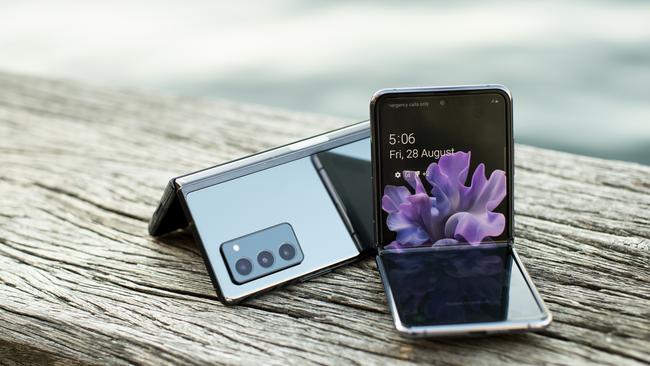
But flexible phone screens are making a comeback this month and they appear to be everything 2020 is not: better, bigger, more reliable, and with added purpose and fun.
Two tech behemoths are behind this second wave – Samsung and Microsoft – and both offer compelling arguments for ditching your boring black mirror for something more flexible.
Samsung will launch its big, bendy hope into the Australian market on September 25, with pre-sales beginning this Wednesday. And, unlike its rivals, it has the benefit of experience.

Samsung Australia mobile vice-president Garry McGregor tells News Corp every criticism, review and piece of feedback was “reviewed intimately” by the company after the Galaxy Fold launch to improve on its second big-screen model.
“Make no mistake – foldables are not going away,” he says.
“At Samsung, the foldable form factor is the future of mobile technology and we will continue to innovate in this category that we created.”
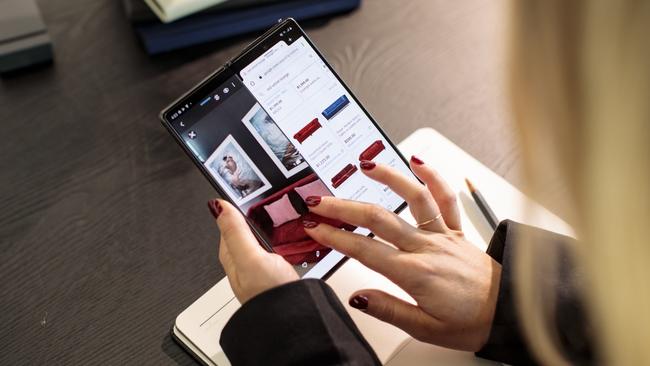
The Galaxy Z Fold2 is a much more polished version of that future.
It commands the same price, at $2999, but it now comes with bigger screens, flexible glass rather than plastic, more viewing and multi-tasking options, a 5G connection, and more camera modes.
This phone is the first where you can see yourself taking a selfie while using the rear cameras.
McGregor admits there were hurdles to take-up to the first Galaxy Fold last year, with low stock availability, and concerns from buyers about its screen crease and potential durability, but predicts its successor “will be appealing to more people”.
Samsung will be up against a new competitor this year, however. Microsoft will this month release its first Surface smartphone in the US; a device with two screens, held side-by-side, that can flip over on one other or lie flat to create an 8.1-inch tablet.
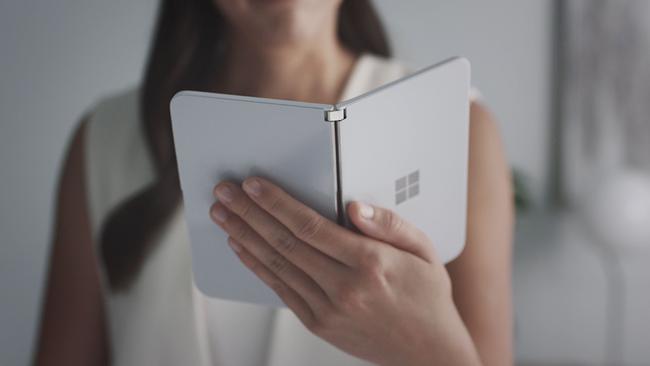
The Microsoft Duo will cost less than Samsung’s model, starting at $US1399 ($1922), though it lacks the camera power and flexible screen of its rival.
Creative Strategies principal analyst Carolina Milanesi says some may have preferred a more futuristic look from Microsoft but its approach offers more benefits than just price.
“The reality is that a foldable form factor wouldn’t have allowed for the slim design the Surface Duo sports, nor would users have been able to use a pen – a key ingredient in many Surface users’ workflows,” she says.

But Telsyte managing director Foad Fadaghi says the biggest challenge for both devices will be ensuring apps will work as seamlessly across screens, as users demand, and convincing them that it’s time to switch to an unconventional device.
“We’re still in early days when it comes to consumers’ uptake of folding phones,” he says, “but it’s likely that this generation will do better than the last.”
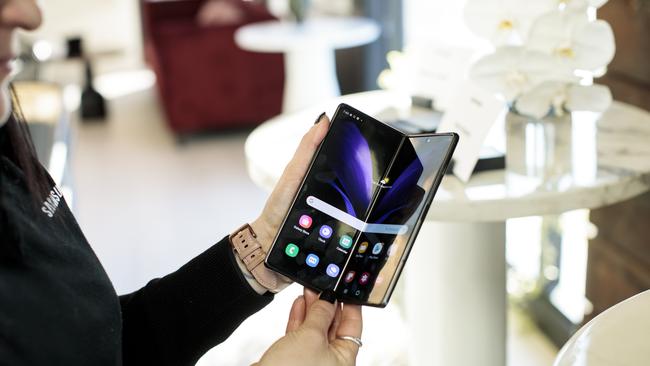
REVIEW: SAMSUNG GALAXY Z FOLD2
Very few things got better in 2020. Folding phones are the exception. And it’s not just the hardware of Samsung’s screen-bending smartphone that is refined: real thought has gone into why you would use this device over a flat handset.
The Z Fold2’s small screen is not just larger but can serve as a preview pane for your photo subjects, or to help you refine your selfie game (some of us need help).
Multi-tasking works with most apps – you can slide them on to the big screen and drag them to fit as you please.
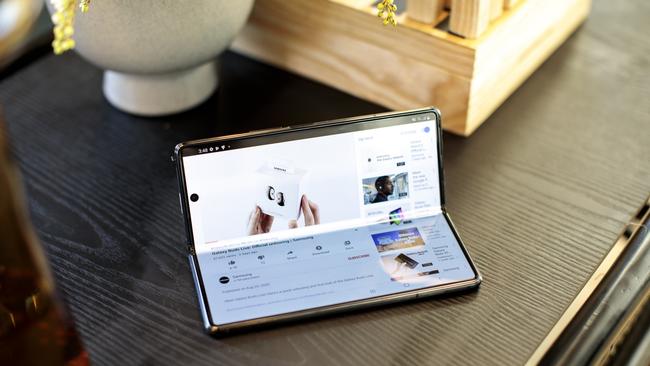
And its hinge is not only stronger but will let this phone sit at a right angle on a desk, which is equally useful for video-viewing as it is videorecording.
The Galaxy Z Fold2 might be pricey but it is compelling, futuristic tech worthy of what we all thought 2020 might look like.

